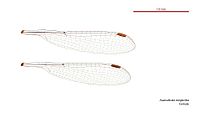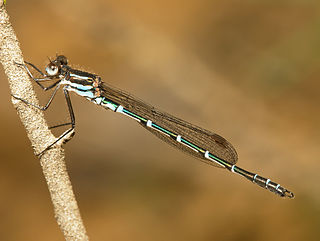
The metallic ringtail is an Australian damselfly in the family Lestidae, It is widely distributed in Tasmania, Victoria and eastern New South Wales. It is a thin, medium-sized damselfly with a green and gold or bluish green and gold coloration. Each abdominal segment is marked by a pale "ring"; this, combined with its glossy metallic coloration, give it its common name of metallic ringtail.
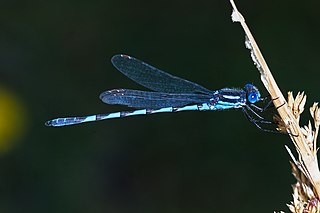
Austrolestes is a genus of medium to large-sized damselflies in the family Lestidae. Austrolestes dragonflies sit with their wings folded completely back. Males are usually bright blue and black, the females duller. Members of this genus are found in Australia, New Zealand and South Pacific islands.

Agriocnemis dobsoni is a species of damselfly in the family Coenagrionidae, commonly known as a tropical wisp. It is a small damselfly; mature males have a white pruinescence over their body, and a dark end to their tail. It is endemic to north-eastern Australia, where it inhabits pools and swamps.
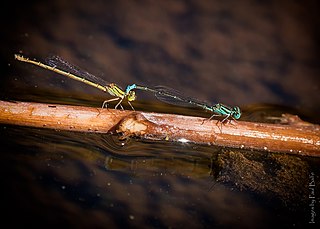
Austroagrion pindrina is a species of damselfly in the family Coenagrionidae, commonly known as a Pilbara billabongfly. It is a small damselfly; the male is blue and black. It is endemic to the Pilbara region of Western Australia, where it inhabits streams and still waters.
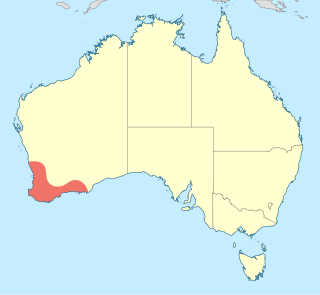
Austrolestes aleison is an Australian species of damselfly in the family Lestidae, commonly known as a western ringtail. It is endemic to south-western Australia, where it inhabits pools, ponds and lakes.

Austrolestes aridus is an Australian species of damselfly in the family Lestidae, commonly known as an inland ringtail. It is widespread across inland Australia, where it inhabits streams, pools, and ponds.

Austrolestes insularis is an Australian species of damselfly in the family Lestidae, commonly known as a northern ringtail. It is widespread across northern Australia, where it inhabits streams, pools, and ponds.
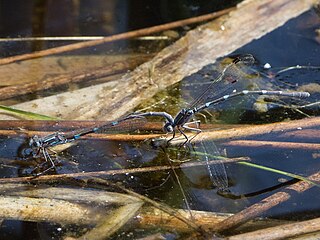
Austrolestes io is an Australian species of damselfly in the family Lestidae, commonly known as an iota ringtail. It has been found in both south-western Australia as well as south-eastern Australia where it inhabits pools, lakes and ponds.
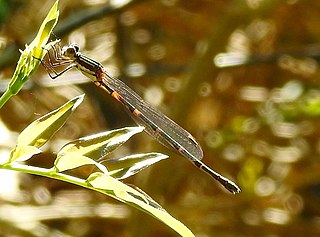
Austrolestes leda is an Australian species of damselfly in the family Lestidae, commonly known as a wandering ringtail. It is found across eastern Australia where it inhabits slow and still water.
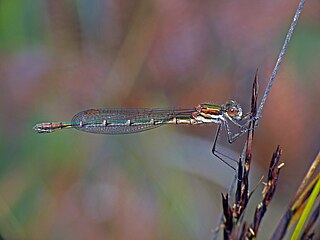
Austrolestes psyche is an Australian species of damselfly in the family Lestidae, commonly known as a cup ringtail. It is found in south-eastern Australia where it inhabits pools, lakes and swamps.
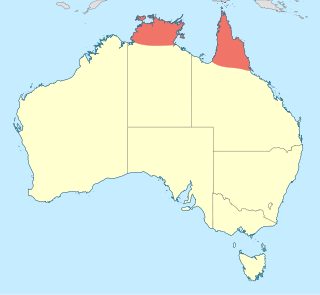
Indolestes alleni is a species of damselfly in the family Lestidae, commonly known as a small reedling. It is found across northern Australia where it inhabits lagoons, ponds and swamps.
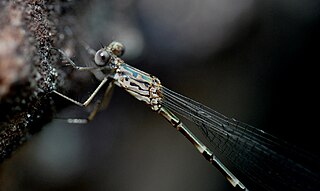
Indolestes obiri is a species of damselfly in the family Lestidae, commonly known as a cave reedling. It is endemic to Arnhem Land, in Northern Territory, Australia, where it inhabits shallow, rocky pools.

Lestoidea conjuncta is a species of Australian damselfly in the family Lestoideidae, known as a common bluestreak. It is endemic to coastal north-east Queensland, where it inhabits streams in rainforest.

Archiargiolestes parvulus is a species of Australian damselfly in the family Megapodagrionidae, commonly known as a midget flatwing. It is endemic to south-western Australia, where it inhabits streams, bogs and swamps.
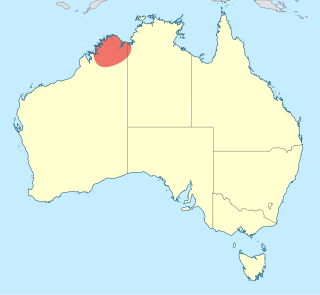
Nososticta kalumburu is a species of Australian damselfly in the family Platycnemididae, commonly known as a spot-winged threadtail. It has only been found in the Kimberley region of Western Australia, where it inhabits streams.

Nososticta koolpinyah is a species of Australian damselfly in the family Platycnemididae, commonly known as a Koolpinyah threadtail. It has only been found in the vicinity of Darwin and on Melville Island in Northern Territory, where it inhabits streams.

Nososticta koongarra is a species of Australian damselfly in the family Platycnemididae, commonly known as a citrine threadtail. It has only been found on the Arnhem Land escarpment in Northern Territory, where it inhabits streams.
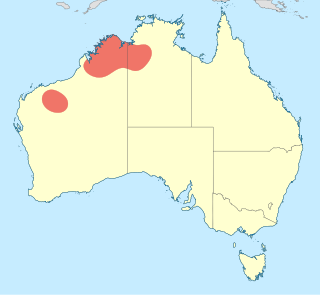
Nososticta liveringa is a species of Australian damselfly in the family Platycnemididae, commonly known as a malachite threadtail. It is endemic to northern Western Australia and western Northern Territory, where it inhabits streams and lagoons.

Nososticta taracumbi is a species of Australian damselfly in the family Platycnemididae, commonly known as a Melville Island threadtail. It is endemic to Melville Island, Northern Territory, where it inhabits streams.

Episynlestes cristatus is a species of Australian damselfly in the family Synlestidae, commonly known as a tropical whitetip. It is endemic to north-eastern Queensland, where it inhabits streams in rainforest.





